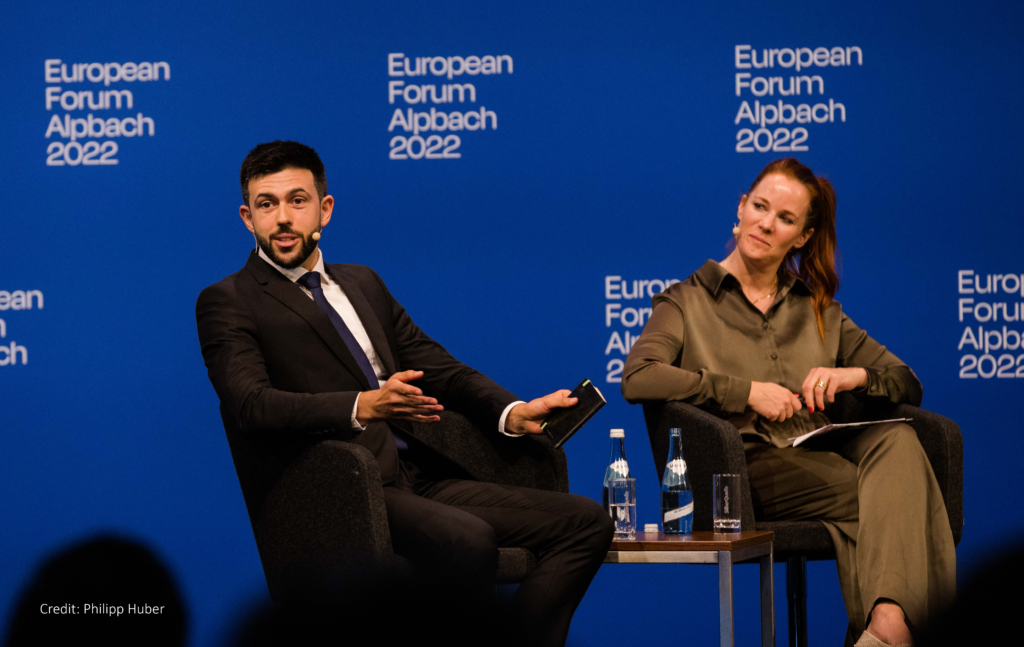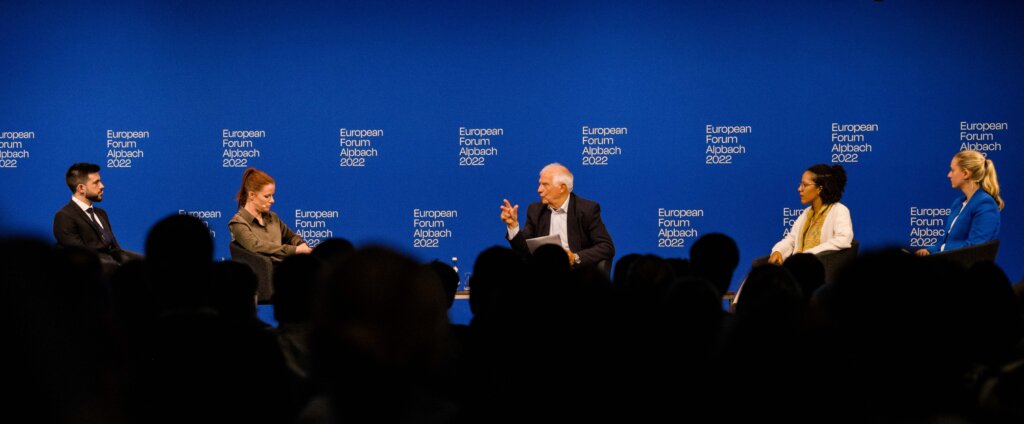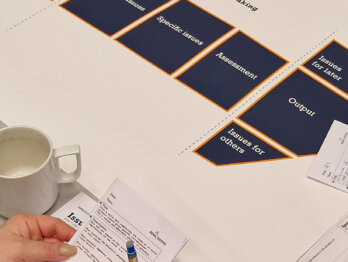Future Crises Need Attention Now

Joshua Polchar, Strategic Foresight Lead at the OECD Observatory of Public Sector Innovation, reflects on the panel on which he spoke at European Forum Alpbach 2022, and offers perspectives on how governments can deal with the crises they’re facing without inadvertently missing the warning signs of new ones.
Looking at current events, it feels like governments are in constant firefighting mode. How can we make sense of what’s going on without losing perspective of the long term?
Firefighting is an apt metaphor. Some fires can’t be avoided, but there’s always more we can do to make our societies less flammable—less prone to crisis—and prepare to contain fires that do occur.
In 1938, British Prime Minister Neville Chamberlain commended the Munich Agreement, which provided for the annexation of Czechoslovak borderland areas named the Sudetenland to Nazi Germany, for achieving “peace in our time”. That time didn’t last long: the Agreement averted war for less than a year.
Some might say this story only offers lessons in hindsight, but I would disagree. It is a classic case of people believing that we deal with crises in the present, and the long-term in the future. That kind of thinking, where we separate out different “time horizons”, means we’re always behind the curve.
The fuel of the crises we are living through started building up in the past: dependence on imported gas, carbon emissions, declining trust in government, and many other causes of crisis have all been known about for decades. The so-called long term is already underway, right now. We don’t have to look ahead to see the future: it’s right here, emerging in the present.
We must change our relationship with anticipation to get policy right. We must recognise that dealing with the long term means thinking and acting now. It’s not an optional add-on: it’s an integral part of wise policymaking.

The OECD’s role is to support governments making better policies for better lives. How can decision-makers better prepare for the future?
Forecasting has an important role to play, but it has limitations. We can all think of economic and political forecasts which missed the mark. Some changes are easy to forecast accurately; demographic trends are a good example. But in most domains—especially economics, foreign policy, security, and natural hazards—the future is never simply an extension of the past. There are too many factors involved, too many complex interactions, too many unknowns for us to make models that take everything into account and reliably predict with sufficient accuracy. Even people or algorithms that get it right a few times will usually fail at some point. And when your model fails, it brings down with it all the recommendations and guidance it generated and justified.
Weather forecasters know this. They produce sets of multiple forecasts, known as ensemble forecasts, to give an indication of the range of possible future states that could occur. But we humans like to reduce uncertainty, and place bets on just one thing occurring. More problematically, forecasting gives the false impression that the future lies ahead, instead of already existing in the present. You look at the clouds before leaving the house, as it will be too late to go back for an umbrella when you’re already outside and dealing with the ‘crisis’ of getting drenched!
Spotting what’s changing, what it could mean for our organisations, and doing something about it now: that’s what strategic foresight is all about.
Why aren’t decision-makers doing more to prepare for the future?
A few reasons. Our attention and resources are extremely divided, with the sheer number and complexity of issues making it harder to prioritise everything that needs to be dealt with. Another reason is that it takes humility to realise that our existing actions and agenda might not be the best ones.
There’s also a whole range of cognitive biases like favouring the status quo and path dependency which make it harder for individuals and organisations to change course in light of new information. And the political rewards tend to be higher for managing a crisis than for avoiding one, since people notice bad things that have already happened more than ones that could have happened but didn’t.
To make it easier for policy makers and experts in public sector innovation get started with and build a case for anticipatory innovation, we recently launched Anticipatory Innovation Resources (AIR).
What do governments need to do to?
Preparing for the future is a constant process, and it takes a lot of dedication and attention to do effectively. Organisations that do particularly well at it have a few things in common.
First is sustained demand from senior decision-makers for futures work, and the willingness to listen to and use what the futurists are saying.
Second is the knowledge and skills needed to do high quality strategic foresight. This work requires expertise and experience to get right, so you need experienced futurists and communicators to picture the future and deliver the message.
Third is the organisational conditions—governance—to connect futures thinking with present-day actions. These include things like learning loops and the right incentives to act. At the OECD Observatory of Public Sector innovation, we have analysed the characteristics of effective anticipatory systems and assisted several governments in upgrading theirs, including Ireland, Finland, and Slovenia.

How can organisations get started preparing for the future today?
The OECD has prepared a range of resources for organisations wanting to get started in anticipation and innovation. We and others offer expertise in designing and delivering strategic foresight interventions to demonstrate the value of our approach.
There are numerous toolkits and courses available for those seeking to learn more, but there is nothing like skillfully applying strategic foresight to real-world decisions to see its benefits. If you’re a policy maker, identify an important initiative, programme, or position you’re responsible for. It could be something as specific as a workforce talent management strategy; or something as broad as a whole country’s foreign policy. The important thing is that the strategic foresight process is connected with people who have the power to change things. With a clear purpose in mind, you can engage in a strategic foresight process to learn from the future to make robust choices in the present.
At OPSI we recently launched the report “Tackling Challenges through Public Sector Innovation”, which offers insights on how governments can get started spotting what needs attention early and putting processes in place to deal with it. If you would like to learn more about how the OECD Observatory of Public Sector Innovation supports governments to build and enhance their foresight and anticipation systems, please reach out to us: [email protected].












